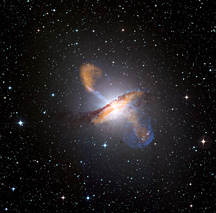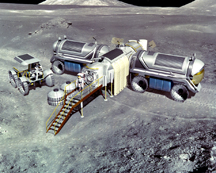


- MAKE YOUR OWN EXHIBIT
- WATCH A VIDEO
- READ A BLOG
- TACTILE & BRAILLE HTE
- AMERICAN SPACES
- PIN SOME IMAGES
- SHARE WITH A FRIEND

Topics: the flow of electric discharge.
More about Zap!

An electric current will flow from one point to another when there is an electric voltage, which can be produced by a separation of positive and negative electric charges or a varying magnetic field, and a conducting path, usually consisting of free-roaming electrons. These electrons can be in a metal such as
copper, or in an ionized gas, or plasma, where some of the electrons have been separated from their atoms by collisions with other particles, or by a strong electric voltage, and a conducting channel is formed in the gas.
More Info.
The sudden flow of current is known as an electric discharge, and can occur under a wide variety of conditions. A mild electric discharge is created when negative charge accumulated on your body from walking across a carpet (the triboelectric effect, from the Greek word "tribo" meaning "to rub" is discharged when a doorknob is touched).
Such discharges can be minor nuisance, but in electronic devices, they can be a major problem, especially in spacecraft, where a lot of electronics must be packed into a small space. As the spacecraft travels through regions containing charged particles, it can accumulate a build-up of charge that can lead to an electrostatic discharge. Such discharges can produce unwanted noise, erroneous read-outs, or ruin a device, and careful precautions must be taken, such as insulating all conducting surfaces.
Electrostatic discharge could also be problem for astronauts on the Moon or Mars. Because the soil is so dry, astronauts might pick up so much charge on their boots, and trigger an electrostatic discharge that could damage critical electronic components.
On the positive side, electric discharges have many practical uses: electronic flashes, spark plugs in cars and trucks, arc welding, and electric arc furnaces for use in steelmaking and the production of alloys.
In electrostatic discharges, a current flows because of the voltage built up by the separation of charges. Another way to produce a voltage is by rotating a conductor through a magnetic field, or by rotating a magnetic field around a conductor. This is the principle of the generator, a device that converts mechanical energy to electrical energy. An electric field is induced by the relative rotation of the conductor and the magnetic field, and a current flows.
The principle of electromagnetic induction has been incorporated into electric generators which power our homes and businesses. The flow of water or steam is directed through a device called a turbo generator which converts the energy of the flow into rotational energy and then into electricity.
Some of the most powerful energy sources in the cosmos are naturally occurring turbo generators.

Image: X-ray: NASA/CXC/CfA/R.Kraft et al.; Submillimeter: MPIfR/ESO/APEX/A.Weiss et al.; Optical: ESO/WFI
Highly magnetized, rapidly rotating neutron stars can produce electric potential differences of quadrillions of volts. Such voltages, which are 30 million times greater than those of lightning bolts, create blizzards of high-energy particles. These high-energy particles produce beams of radiation from radio through gamma-ray energies. Like a rotating lighthouse beam, the radiation can be observed as a pulsing source of radiation, or pulsar. Pulsars were first observed by radio astronomers in 1967. There are now approximately 1000 known pulsars. The pulsar in the Crab Nebula, one of the youngest and most energetic pulsars known, has been observed to pulse in almost every wavelength—radio, optical, X-ray, and gamma-ray. A few dozen pulsars are observed to pulse in X-rays and six are seen to pulse in gamma-rays.
http://chandra.harvard.edu/photo/1999/0052/
The principle of the turbo generator could also explain the high-energy jets that radio and X-ray observations show exploding away from some supermassive black holes. These jets move at nearly the speed of light in tight beams that blast out of the galaxy and travel hundreds of thousands of light years. The energy input from such jets may be responsible for regulating the growth of supergiant galaxies located in the centers of galaxy clusters.
http://chandra.harvard.edu/photo/2009/cena/
Intriguing items about electrostatic discharges and electromagnetic induction.
- Voltages as large as 20,000 volts can be created by the triboelectric effect as a person walks across a carpet and touches a doorknob. Although such a high voltage can give you a shock, it is not dangerous, as it lasts a very short time (a few microseconds) and delivers less than 1 percent of the energy given off by a 10-watt light bulb.
- Voltages as large as 300,000 volts can be created by the triboelectric effect as a roll of Scotch tape is unpeeled.
http://chandra.harvard.edu/chronicle/0408/scotch/ - NASA's New Horizons captured lightning strikes near Jupiter's North and South poles and equator. Some of the bolts were 10 times as powerful as anything ever recorded on Earth, but they may be the sum of multiple strikes at a single location while the image was taken. Lightning was also seen by the Galileo Jupiter mission in the 1990s and Voyager in 1979. Lightning on Jupiter is likely caused by processes similar to those on Earth.
http://www.nasa.gov/centers/goddard/multimedia/largest/lightning.html - The Itaipu Dam, a hydroelectric dam on the Paraná River located on the border between Brazil and Paraguay, is the world's largest operating hydroelectric facility in terms of annual energy generation. It has 20 turbo generators providing 700 megawatts each.
http://www.itaipu.gov.br/en/energy-home - The rapidly rotating, high magnetized, neutron star in the Crab Nebula generates 10 septillion (10 trillion trillion) megawatts.
http://chandra.harvard.edu/photo/1999/0052/0052_context.html
http://chandra.harvard.edu/chronicle/0201/vela.html
Back to the Electric Discharge page

"Here, There, & Everywhere" (HTE) is supported by the National Aeronautics and Space Administration under grant NNX11AH28G issued through the Science Mission Directorate.
HTE was developed by the Chandra X-ray Center, at the Smithsonian Astrophysical Observatory, in Cambridge, MA.
Email: cxcpub@cfa.harvard.edu | Phone: 617.496.7941
Follow us: #HTEScience on Twitter

